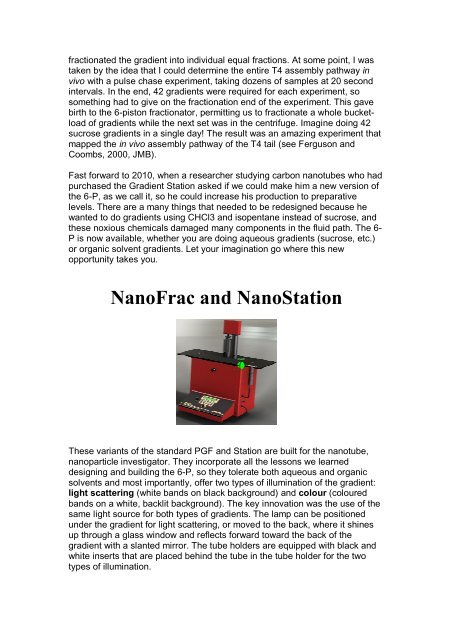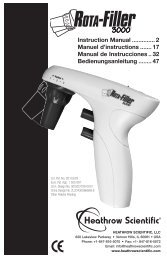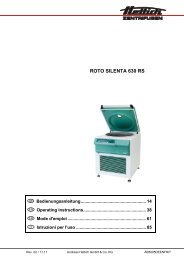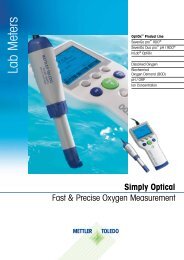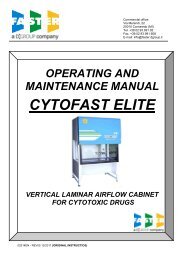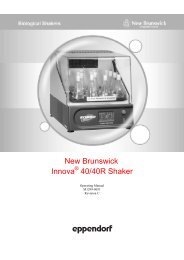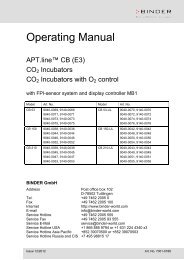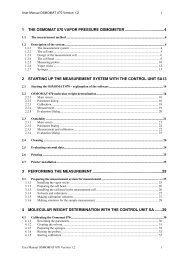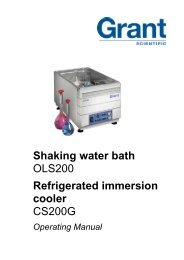Gradient Master - Wolf Laboratories
Gradient Master - Wolf Laboratories
Gradient Master - Wolf Laboratories
Create successful ePaper yourself
Turn your PDF publications into a flip-book with our unique Google optimized e-Paper software.
fractionated the gradient into individual equal fractions. At some point, I was<br />
taken by the idea that I could determine the entire T4 assembly pathway in<br />
vivo with a pulse chase experiment, taking dozens of samples at 20 second<br />
intervals. In the end, 42 gradients were required for each experiment, so<br />
something had to give on the fractionation end of the experiment. This gave<br />
birth to the 6-piston fractionator, permitting us to fractionate a whole bucketload<br />
of gradients while the next set was in the centrifuge. Imagine doing 42<br />
sucrose gradients in a single day! The result was an amazing experiment that<br />
mapped the in vivo assembly pathway of the T4 tail (see Ferguson and<br />
Coombs, 2000, JMB).<br />
Fast forward to 2010, when a researcher studying carbon nanotubes who had<br />
purchased the <strong>Gradient</strong> Station asked if we could make him a new version of<br />
the 6-P, as we call it, so he could increase his production to preparative<br />
levels. There are a many things that needed to be redesigned because he<br />
wanted to do gradients using CHCl3 and isopentane instead of sucrose, and<br />
these noxious chemicals damaged many components in the fluid path. The 6-<br />
P is now available, whether you are doing aqueous gradients (sucrose, etc.)<br />
or organic solvent gradients. Let your imagination go where this new<br />
opportunity takes you.<br />
NanoFrac and NanoStation<br />
These variants of the standard PGF and Station are built for the nanotube,<br />
nanoparticle investigator. They incorporate all the lessons we learned<br />
designing and building the 6-P, so they tolerate both aqueous and organic<br />
solvents and most importantly, offer two types of illumination of the gradient:<br />
light scattering (white bands on black background) and colour (coloured<br />
bands on a white, backlit background). The key innovation was the use of the<br />
same light source for both types of gradients. The lamp can be positioned<br />
under the gradient for light scattering, or moved to the back, where it shines<br />
up through a glass window and reflects forward toward the back of the<br />
gradient with a slanted mirror. The tube holders are equipped with black and<br />
white inserts that are placed behind the tube in the tube holder for the two<br />
types of illumination.


